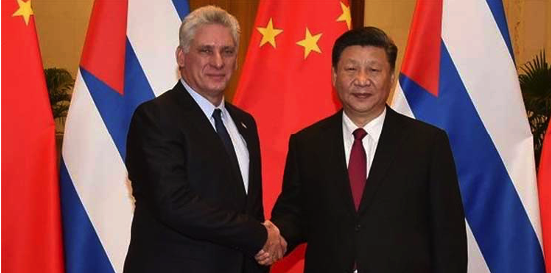Source: CleanTechnica.com
May 19th, 2019 by Steve Hanley
Cuba began investing in renewable energy in 2014 and is ramping up its efforts in a push to make renewables its principal source of electricity by 2030. According to Xinhua News, China is one of the leading investors in Cuba’s renewable energy program.

The goal is for Cuba to derive 24% of its electricity from renewables such as sugarcane biomass, solar panels, wind farms, and small hydroelectric plants by 2024. “Photovoltaic solar energy is the one with the most progress, and there are 65 parks built throughout the country and another 15 are in process that will increase the installed power to 42 megawatts,” says Tatiana Amaran Bogachova, general director of the Electricity Department at Cuba’s Ministry of Energy and Mines.
Ovel Concepcion, director of renewable sources at the island’s Electric Union, says his organization expects to install 700 megawatts of renewable solar power by 2030. “We will also set up some 688 MW in wind farms, 56 MW in hydroelectric plants and provide electricity through photovoltaic panels in all remote homes that have no access to any other source of energy,” he says.
Electricity from solar panels costs 95% less than electricity from traditional thermoelectric facilities. Solar also has the advantage of bringing electricity to remote areas of the island that have no access to the utility grid. Today there are over 17,000 solar panels that serve those underserved areas.
“Today there are four projects in different construction phases of solar energy parks with international investment for a total of 200 MW,” Conception says. “One of them is the first park with 100 percent foreign capital located at the Mariel Special Development Zone.” Four experimental wind energy parks with an output of 11.5 megawatts of renewable energy are under construction, financed in large part by investment from China and the UK. The La Herradura 1 and 2 wind farms in eastern Las Tunas province will have 54 turbines that feature Chinese technology.

Cuba has a lot of sugarcane. The biomass remaining after the sugar is extracted from the plants will be used to power electrical generating plants. “The electrical surplus after the sugar manufacturing process will be sold to the Electric Union for the nation’s energy system,” says Barbara Hernandez, head of power generation at the state-run sugar producer Azcuba. “It’s a way to recover the investments of bioelectric plants and use this model once the harvest is over.”
The country’s first bioelectric plant is being built in central Ciego de Avila province, about 450 km east of Havana, with a joint investment between the island and companies from China and Britain. “This plant will generate around 157 KWh for each ton of sugar cane processed by the adjacent Ciro Redondo sugar mill. It’s now at 41 percent of its construction plan with the aim of starting operations by the end of the year,” says Francisco Lleo Martin, general director of Zerus, a Cuban holding company for foreign investment in the sugar sector.
China is flexing its economic muscles in dozens of countries around the world. Its philosophy is “business is business.” The United States, on the other hand, refuses to engage economically with any nation that doesn’t hew to its ultra nationalistic politics. Exceptions are made only for countries that purchase enormous amounts of weapons from America’s armaments manufacturers.
America’s infatuation with the illusion of greatness is leaving the door wide open for other countries to forge economic and political ties with a neighbor just 90 miles away. Such short sighted policies will hardly get reactionaries what they want most — the adoring embrace of the world community.
